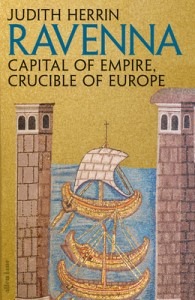MedievalReporter.com
Covering history's most marvelous millennium
Join our newsletter!

Covering history's most marvelous millennium
Covering history's most marvelous millennium
We review stuff for you, so you can pick the best medieval material.
Here’s our take on Judith Herrin’s Ravenna.
Ravenna is a case study to top all case studies. The amount of depth and detail in there is incredible. Few books give so much insight into the sixth and seventh centuries as this one. The author has gone to great lengths to explain who held power where in early medieval, or in this case, post-Antiquity Italy. If you ever wondered how the core of the ancient Roman Empire “worked” after its supposed fall, this book is the one. Ravenna describes and explains in a beautiful way how the Byzantines did or did not hold on to beloved Italia – hint: it was a rollercoaster.

The complexity of the power politics surrounding and affecting the city of Ravenna then makes this book uninviting to newcomers, though. As medieval fans, we absolutely loved it. But if you’re not into the (Early) Middle Ages that much, we’ll pretty much guarantee you that you won’t finish this book. It’s dense, it’s tough, it’s challenging – something to sink your teeth in only if you’re up to it!
What Judith Herrin does well is, explain how the Western Roman Empire continued after 476. (This is a case we’re making, too.) Ravenna was chosen as the new Roman capital in the West by the beginning of the 5th century CE. And while the Goths are held responsible for terminating the Western Empire, it was the Gothic king of Theoderic the Great who – of all people – chose Ravenna as his capital.
The Eastern Roman Empire later wrestled Ravenna back from the Goths, and it would keep it under its control for more than two centuries, despite invasions and attacks by the Lombards. It became Byzantium’s primary outpost in the West. Ravenna was the seat of one out of only two exarchs – the other one being Carthage, which fell to the Caliphate around 700 CE. As such, the city of Ravenna became the crucial link between East and West, Old Rome and New Rome, Lombard and Goth, Frank and Byzantine, pope and patriarch.
A drawback of Ravenna is that the author gets way too detailed at times. Numerous wills are described in excruciating detail, with Herrin listing all the names and going over all their professions. Although historical science is trying hard to become “more social”, shifting from kings and emperors to the common man, this particular way of going about it is not helping. To our taste, some paragraphs are in there for the sake of being complete, as if Herrin is trying to cover every single angle. We don’t have to tell you that completeness – while often highly valued by historians – is not a great narrative skill. A stern editor could have helped the author in this regard.
To conclude, if you’d like to dive into the often-obscure 6th and 7th centuries and want to read something that’s not focused on Constantinople, the Franks or the Caliphate, this book is great. As long as density doesn’t scare you, Ravenna is a true treat.

“Great (but not for newcomers)”
Disclosure: these are affiliate links, meaning – at no additional cost to you – we will earn a small compensation if you click through. With these earnings, we can provide you with more exclusive medieval reports and guides.
Grab another book review from our collection.